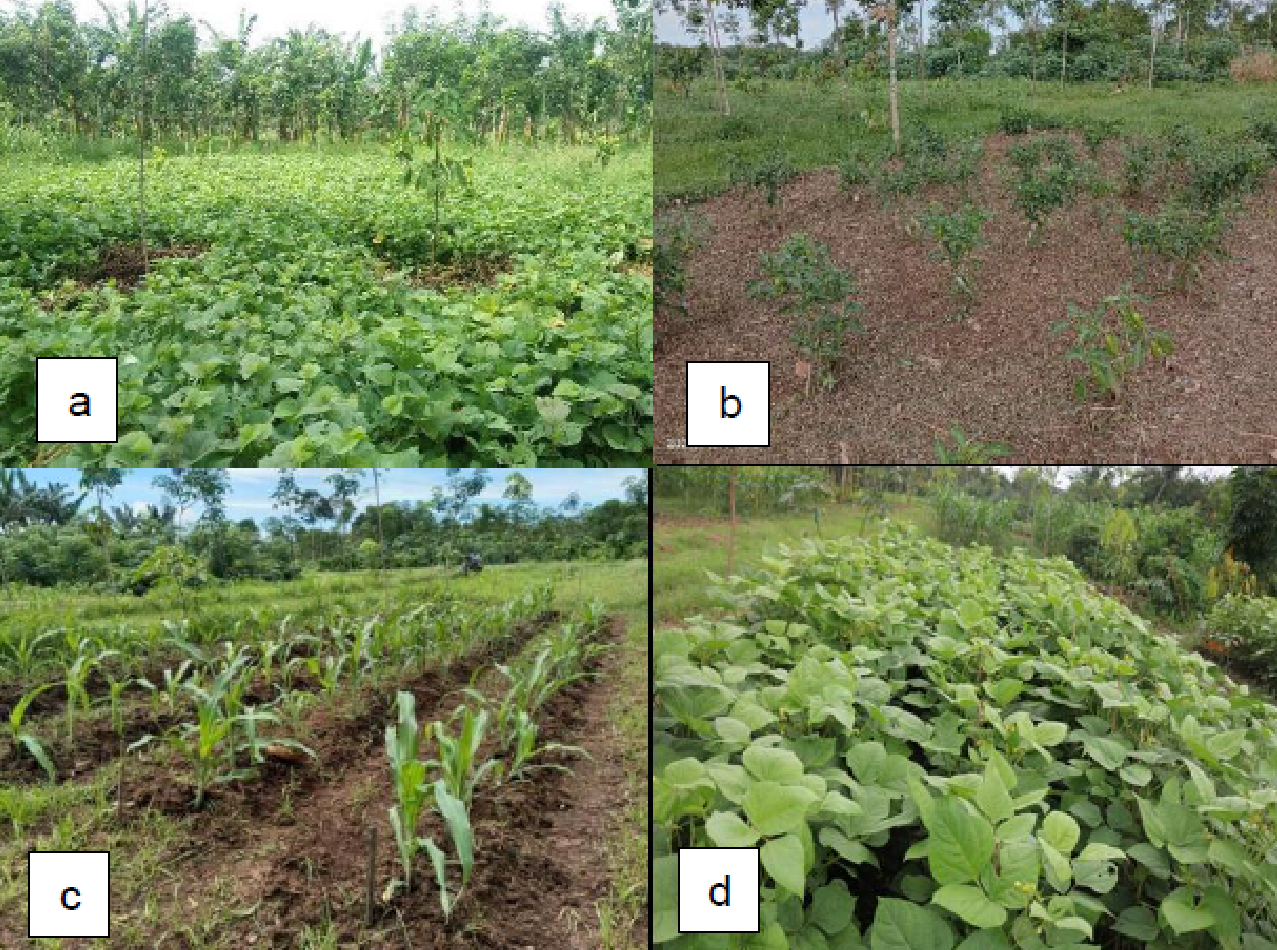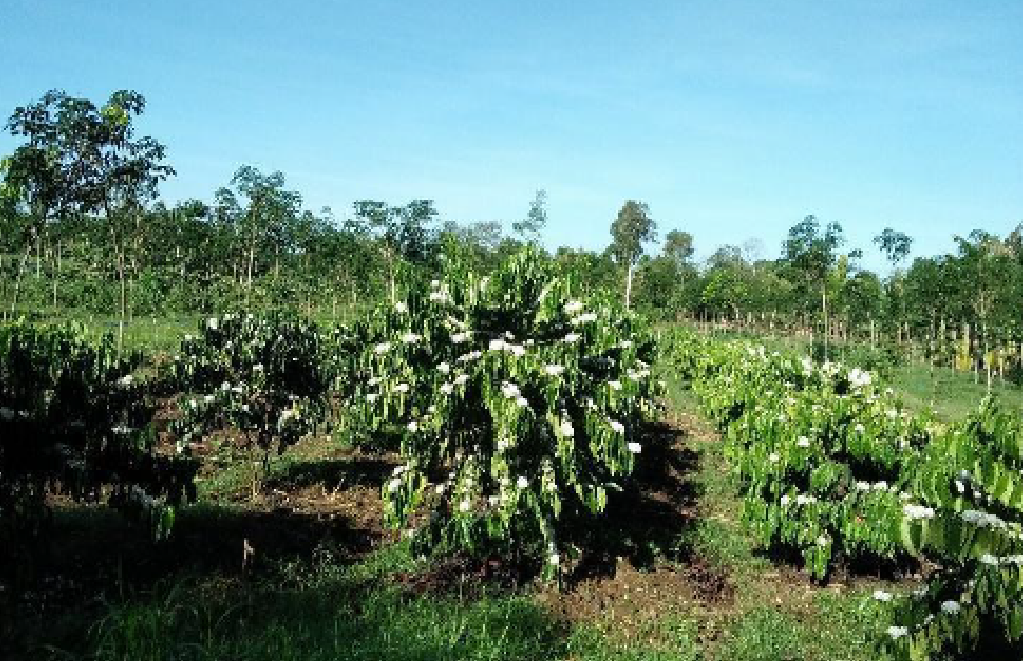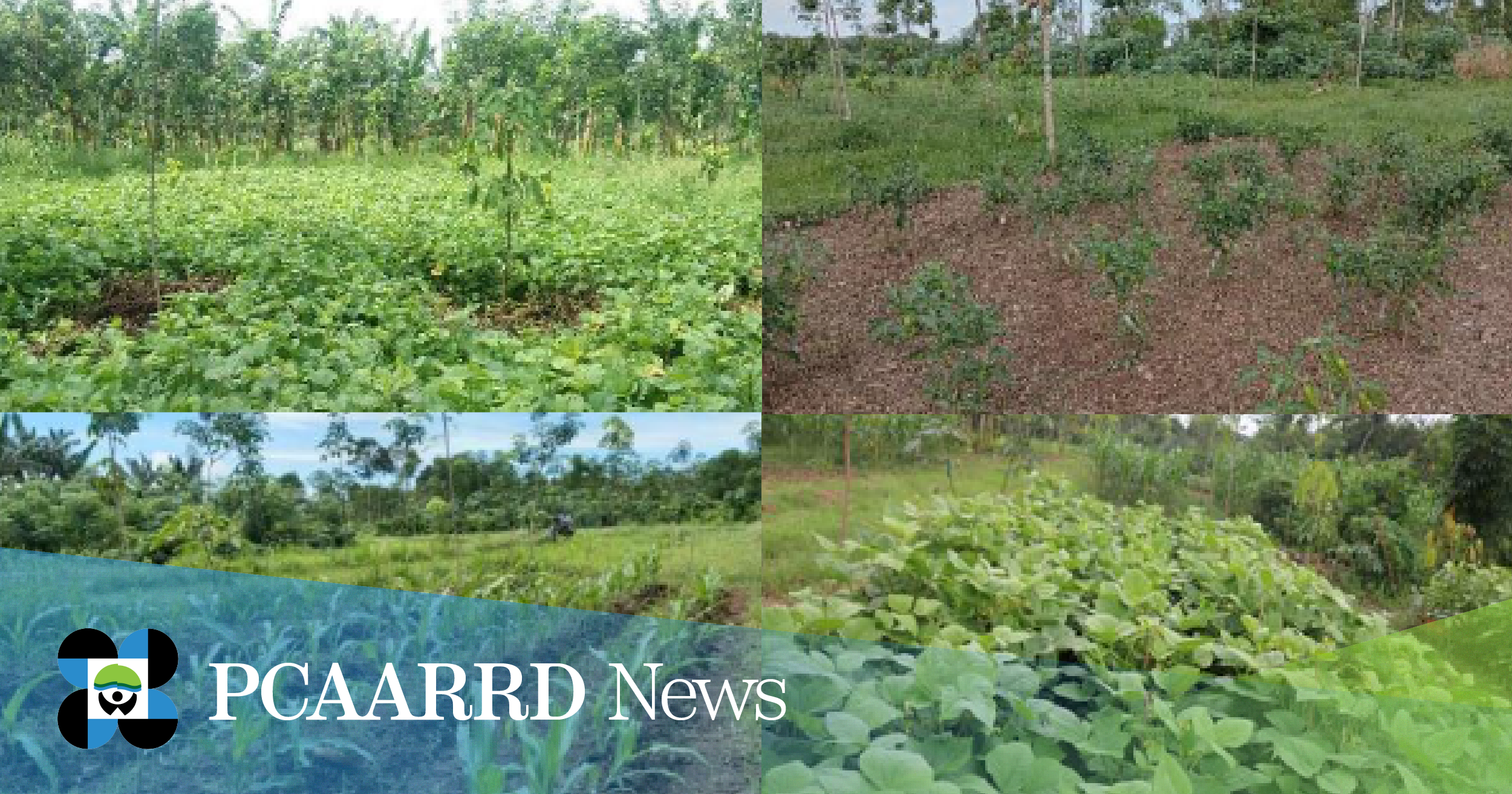A research program is pioneering a rubber-based cropping system designed to enhance soil health of rubber farms in Agusan del Sur and Cotabato.
Titled, “Development of Rubber-based Cropping Systems in Southern Philippines,” the program is being led by Dr. Adeflor G. Garcia of the University of Southern Mindanao (USM).
This program with six component projects is funded by the Philippine Council for Agriculture, Aquatic and Natural Resources Research and Development of the Department of Science and Technology (DOST-PCAARRD) and the Australian Centre for International Agriculture Research (ACIAR).
A component project, “Effective Rubber-Based Cropping System in Agusan del Sur and North Cotabato” led by Joseph O. Castillo of USM, has successfully designed cropping system models and established experimental farms to test the four models that combine rubber trees with carefully chosen companion species like cardava bananas, cacao, coffee, and lanzones.

Annual intercrops (a. sweet potato, b. bell pepper, c. corn, d. mungbean) planted in the 1-ha rubber farm. (Image credit: University of Southern Mindanao)
Rubber trees under the project have achieved the recommended height for branch induction within 10-12 months after planting, laying the foundation for future latex production. Meanwhile, perennial intercrops like cardava banana have already begun delivering bounty, with harvests exceeding 25 kilograms per mat since March 2021.
Since rubber trees take six to eight years to mature, extensive research and field trials underpin every step. From evaluating the performance of various intercrops like corn, mungbean, eggplant, bell pepper, sweetpotato, and cassava to monitoring the growth and health of rubber trees, this intercropping strategy fosters soil resilience and provides crucial income during the rubber trees' immature phase. This, thereby, boosts overall agricultural productivity.
Notably, three crop cycles of corn and mungbean were achieved in the first two years while cassava, though promising, requires careful management due to its potential shading effect on inner rubber rows.

Furthermore, the project's impact extends beyond its immediate beneficiaries. Five rubber-based farming system models in USM in Kabacan, North Cotabato, and in Mabuhay, Bayugan City, Agusan Del Sur stand as living testaments to the feasibility and benefits of this approach. These farming system models also served as training grounds for extension workers, agricultural students, and farmers. It also served as demonstration areas for the National Organic Agriculture Conference with 55 farmer-participants from different regions in the Philippines. Moreover, it provides smallholder farmers with diversified yields and improved soil management knowledge.
The project paints a brighter future for the uplands as it showcases the economic viability and soil health benefits of a diversified cropping system. Likewise, the farmers’ knowledge on rubber-based technologies comes with its empowerment for marginalized communities. Innovative approaches to rubber cultivation offer a beacon of hope, demonstrating that science and collaboration can indeed tame the challenges of poverty and inequality.
The project is aligned with the Philippine Development Plan (PDP 2023-2028) of promoting and expanding natural resource-based industries and enterprises and modernizing agriculture and agribusiness.

